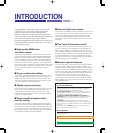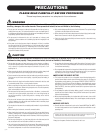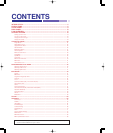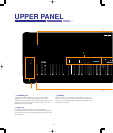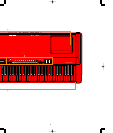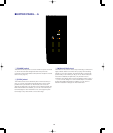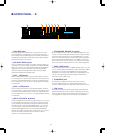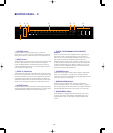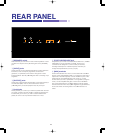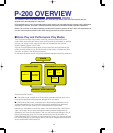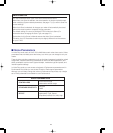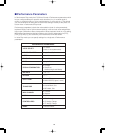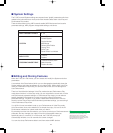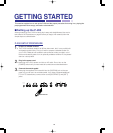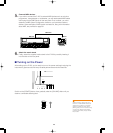
SPEAKER
ON OFF
INPUT
R L/MONO
R L/MONO
OUTPUT
SUSTAIN
SOSTENUTO
SOFT
FOOT CONTROLLER
THRU
MIDI
OUT
IN
13
! [SPEAKER] switch
This switch lets you turn off the P-200’s internal speakers. It does
not affect the output from the [OUTPUT] jacks or the [PHONES]
jack.
" [INPUT] jacks
These jacks let you input line-level signals from another electronic
instrument, such as a rhythm programmer, external tone
generator, or synthesizer, and monitor it through the P-200’s
internal speakers. Use the [L/MONO] jack when connecting only a
single line.
# [OUTPUT] jacks
These jacks output line-level signals which can be input directly to
an external amplifier, mixer or other audio device. Use the
[L/MONO] jack if your audio equipment has only one input.
$ Pedal jacks
These jacks let you connect up to three foot pedals and use them
as sustain, sostenuto and soft pedals. A single FC4 footswitch is
included with your P-200. If you wish to attach additional foot
pedals, be sure to use only Yamaha models FC4 or FC5.
% [FOOT CONTROLLER] jack
This jack lets you connect a foot controller (Yamaha FC7, available
separately) for use as an auxiliary controller. The [FC] foot
controller can be assigned to control a variety of functions,
including reverb depth or modulation speed, which lets you
change these parameters by foot as you play.
& [MIDI] terminals
These terminals allow the P-200 to communicate with other MIDI
devices, using standard MIDI cables. To control the P-200 using a
sequencer or another keyboard, connect the MIDI out jack of the
external device to the [MIDI IN] jack of the P-200. To control
another device (such as a synthesizer or tone generator) using the
P-200, connect the [MIDI OUT] jack of the P-200 to the MIDI in
jack of the external device. The [MIDI THRU] jack simply passes
the data received at the P-200’s [MIDI IN] jack through unaffected,
and is used when connecting three or more MIDI devices in a
series.
REAR PANEL



